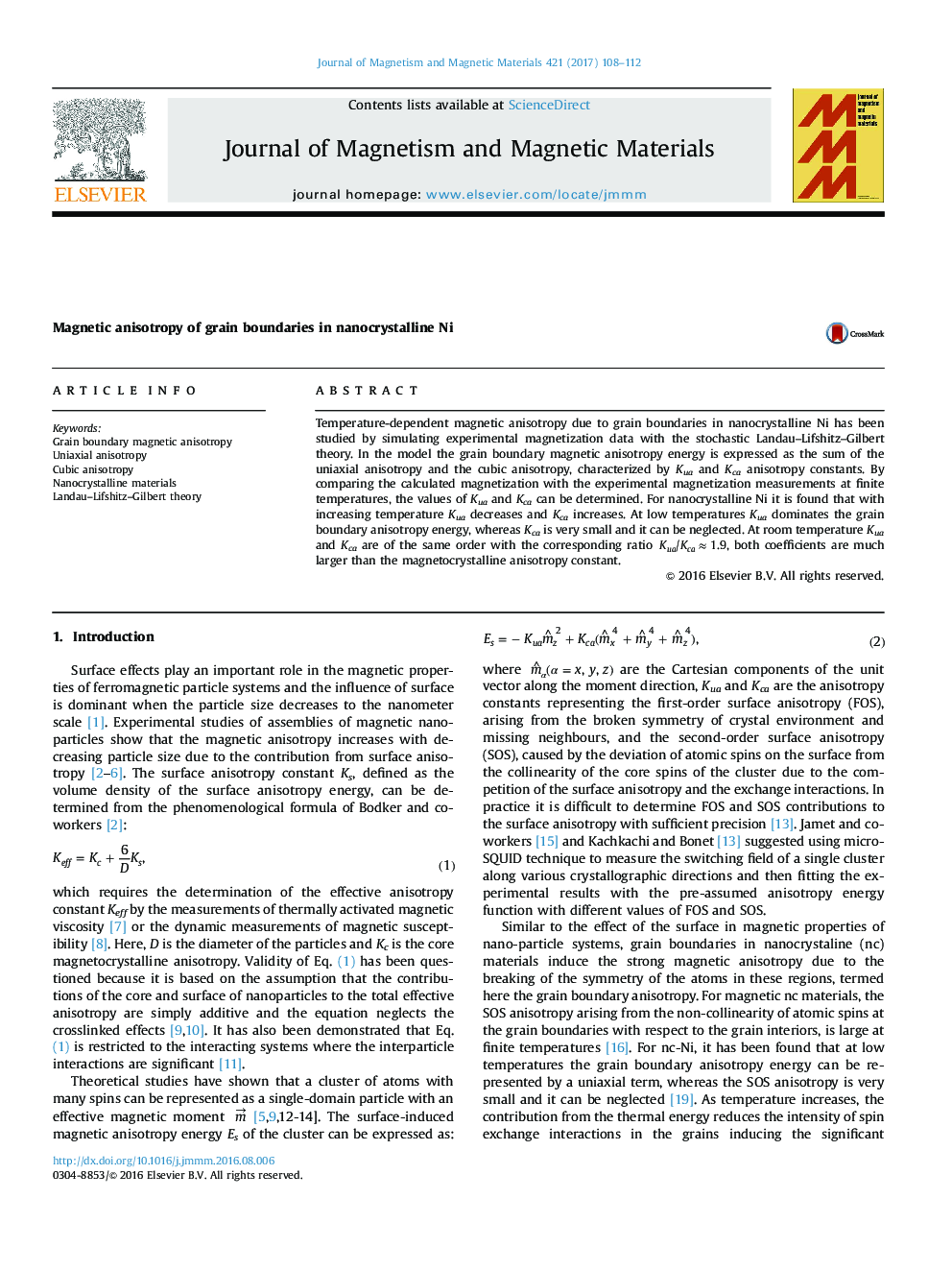| Article ID | Journal | Published Year | Pages | File Type |
|---|---|---|---|---|
| 1797643 | Journal of Magnetism and Magnetic Materials | 2017 | 5 Pages |
•Temperature-dependent magnetization of nanocrystalline Ni has been simulated with the stochastic Landau–Lifshitz–Gilbert theory.•First order and second order surface anisotropy energy due to the grain boundaries has been included in the model.•First-order grain boundary anisotropy constant dominates at low temperatures and it decreases with increasing temperature.•Second-order grain boundary anisotropy constant is negligibly small at low temperatures and it increases with increasing temperature.
Temperature-dependent magnetic anisotropy due to grain boundaries in nanocrystalline Ni has been studied by simulating experimental magnetization data with the stochastic Landau–Lifshitz–Gilbert theory. In the model the grain boundary magnetic anisotropy energy is expressed as the sum of the uniaxial anisotropy and the cubic anisotropy, characterized by Kua and Kca anisotropy constants. By comparing the calculated magnetization with the experimental magnetization measurements at finite temperatures, the values of Kua and Kca can be determined. For nanocrystalline Ni it is found that with increasing temperature Kua decreases and Kca increases. At low temperatures Kua dominates the grain boundary anisotropy energy, whereas Kca is very small and it can be neglected. At room temperature Kua and Kca are of the same order with the corresponding ratio Kua/Kca≈1.9Kua/Kca≈1.9, both coefficients are much larger than the magnetocrystalline anisotropy constant.
